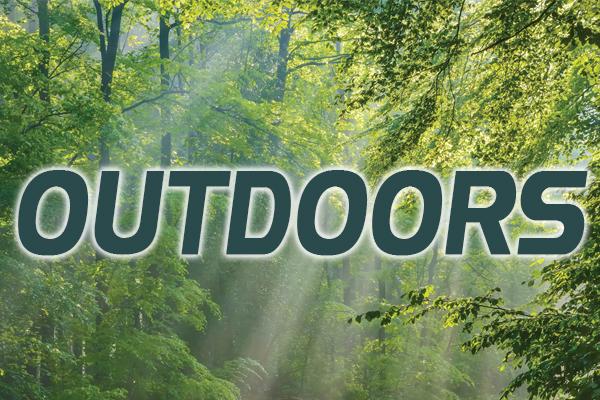By Bill Cook
Diversity has become a mainstream mantra. It’s a religion in many respects. The word can evoke visceral reactions along a full spectrum from resistance to comfort. What’s it all about?
In natural resources, especially forestry, diversity encompasses the range of differences of both biotic and abiotic things. Diversity is too often grossly misunderstood or, perhaps, simply not understood. This confusion makes it an excellent candidate for political football.
Biotic diversity is often held aloft as a tenet of naturalist philosophy of one form or another, including by many among natural resource professionals. Such an attitude is often divorced from the realities and wonders of science. There seems to be a gradient where the farther one is away from the land, the stronger one adheres to the mythological side of diversity.
Most people with whom I broach the topics perceive little about the scientific elements of diversity. Yet, most people will buy into most anything that, perhaps, promotes diversity and stand against anything that, supposedly, compromises diversity, despite a lack of evidence one way or another. The term has degraded to the level of a marketing tool with companion words such as “sustainable”, “natural”, “green” and “eco”.
Protection or enhancement of diversity is regularly cited as a mystically holy reason for grant-writing, then program implementation. I have occasionally asked these good folks “why” diversity is so important. The pat answer is that humans depend upon ecosystems and strong ecosystems are diverse systems. Sounds good. I then ask, can you show me where these connections are supported in the scientific literature? This question typically elicits either a blank or defiant face.
I then refer them to one of the greatest references of all time, George Carlin. Go to YouTube and listen to his seminar about “Saving the Planet”. Every natural resource student should be required to listen.
To be clear, I am a fan of biological diversity. I delight among the myriad lifeforms and landforms. I’ve spent a lifetime learning the pieces and attempting to figure out how they fit together. I learn from those who are experts in a particular element of diversity, especially if they “play well” with others. Yet, I will pose as the devil’s advocate to learn whether proponents are knowledgeable or simply tending to a popular creed.
My objection is the religious aspects of diversity. The marketing. The single interest passionate favorite whatever. The irreverent placement of wonderment to a special interest or theological perspective. The political posturing, either “fer” or “agin”.
Is biological diversity essential to human survival? I think the verdict remains under debate. I suspect the preponderance of evidence supports the notion, at least in a generalist sense. However, humanity could certainly sustain a significant loss in diversity, however much that might be. True believers may bristle at this notion.
However, there are broad regions of the planet where humanity has largely been divested of its natural diversity.
I’ve been to the Sahel where everything that moves has been eaten and the only trees allowed to survive are those that pay homage with useful fruit. Some could subjectively argue that these human populations certainly exist, but don’t thrive. Maybe. But then, look to most of Europe or much of the Levant, where biological diversity has been derailed for a millennium or two. There’s little argument that those folks thrive under conditions of minimally diverse and highly disrupted ecosystems.
North American biodiversity is a cornucopia of beauty, fascination and utility. But, is it essential to human survival?
A certain misperception of biological diversity is that every square foot of the landscape should be loaded with blossoming bouquets of diversity. Nature doesn’t work that way. Some systems are, naturally, far simpler than other systems. Jack pine forests grow on poor soils where most other tree species cannot. These are “monocultures”, using the phraseology uttered by the priests of diversity. Yet, they are ecologically stable and have been around since the glaciers melted, even though wildfire (now clearcutting) effectively regenerates them.
The same can be said across much of the tropics and subtropics. Most of the area, if wooded at all, consists of systems with relatively low diversity. However, with the right physical conditions, the magnificently diverse tropical high forests, often popularized in the media and our collective mentality, are indeed, wonders. Like many, I can speak of this first-hand, having studied them in situ.
Too often, those rich lenses are inappropriately used to view our northern ecosystems.
The level of diversity is relative to what a particular system naturally sports. Expecting jack pine to have the diversity of a northern hardwood forest is nuts. Both are stable and have their own inherent biology and ecology. The potential problem has to do with the loss of the inherent diversity of an ecosystem.
Adding to the definition and description of diversity, most folks would settle for a species count. While certainly an important element, there are other important aspects, such as species richness, genetic diversity, community diversity, landscape diversity, et alia. The formal definition of diversity is biologically robust, but not necessarily easy to measure, and it’s variable.
The elephant in the closet, however, is that humans need materials for survival. These must be extracted, processed, utilized and then disposed of. Forestry is the science of producing wood products along with clean water, healthy soils, habitats and recreation. Diversity can be maintained and even enhanced with management practices. And wood is, by a long shot, the most environmentally friendly raw material at our disposal.
Forestry is the only production-oriented profession, that I know about, which provides a wide range of essential human benefits without degrading the natural resource. That logging truck rolling down the highway is far more than it first appears. It’s usually an icon of diversity and ecosystem health, despite the century-old history and subsequent upturned noses of the religious believers.
Paraphrasing Carlin, the planet is just fine and will be for millennia. We’re the ones that are threatened.


